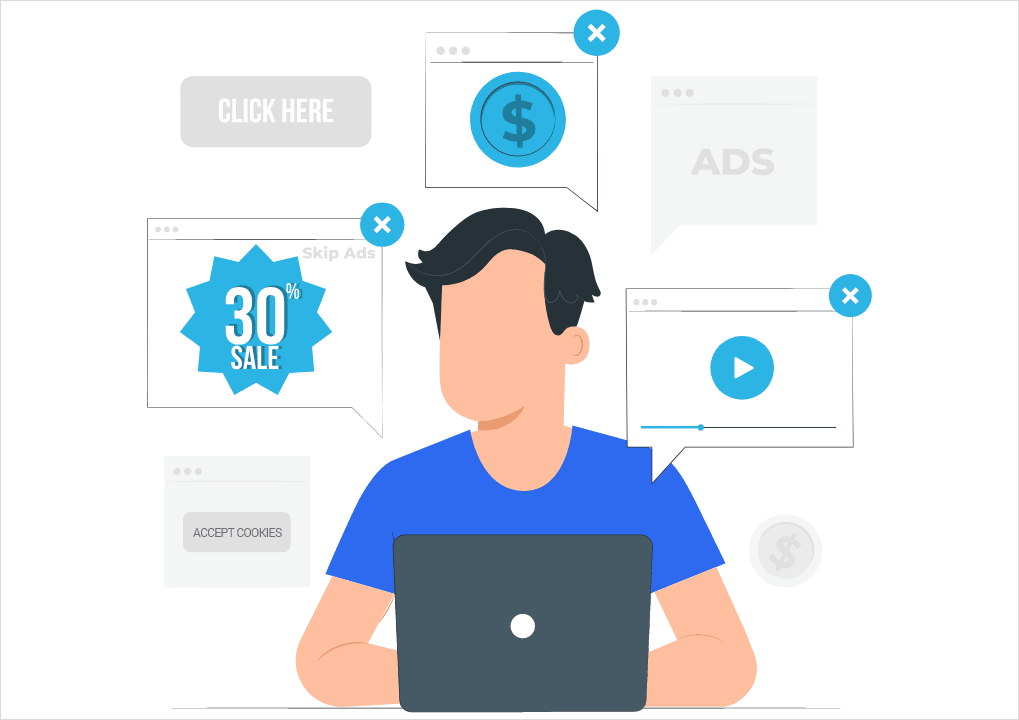After the depreciation of third-party cookies, publishers have kept their game plans in action. They are moving forward and beyond third-party cookies to survive in the digital world. The ad industry is preparing itself to function without third-party cookies. Despite this, the need of the hour is to know where the industry has reached so far.
Everyone is curious to know the answers to the following questions:
- What changes have publishers made?
- How are they preparing to deal with the inevitable changes in the marketing ecosystem?
Publishers are focusing on first-party data and looking for different ways and strategies to increase the value of that data. They have short-term solutions that might fall away over time, while some might be going in the wrong direction. It’s quite a critical situation where any decision or investment can’t be 100% right.
How Are Publishers Dealing with Third-Party Cookie Depreciation?
Regarding how publishers deal with third-party cookies’ depreciation, here are a few ways they have adopted so far.
Use First-Party Data
First-party data has been the bread and butter of brands and publishers after third-party cookies depreciated. Some brands may have accurate first-party data to activate with publishers and partners. Getting first-party data online requires first-party cookies that will still stay even after the end of third-party cookies. Thus, businesses need to master first-party cookies if they want to be successful.
To do so, businesses must maximize the use of first-party cookies and data, keeping privacy in mind. Also, it’s essential to properly define what kind of data they will collect and use to ensure they generate only what’s necessary.
Build a Cookie-Free ID Graph
It is a good solution with the best intention, but very few brands and publishers have been able to build a cookie-free ID graph yet. So, it’s a partnership strategy that most brands have not started implementing. However, two-thirds of marketers are planning to take this initiative. It is better if small- to medium-sized brands focus on first-party data and strategy and then select the right partner with whom they can build a cookie-free ID graph.
Get a Data Clean Room
Surprisingly, very few brands and publishers are using clean data rooms as a solution here. The depreciation of third-party cookies will reduce the understanding of consumer behavior. To overcome this, brands are looking for a privacy-safe way, so that’s how clean rooms come into the equation.
It’s a new exciting offer because it will collect all the data from the first-party environment in one cleaner place. Many brands are not moving in this direction yet, but it’s a bright and promising way to deal with the end of third-party cookies.
Using Google’s Publishers Provider Identifier (PPID)
The number of publishers using Google’s PPID, a third-party identifier, has grown incredibly in the last few months after the depreciation of third-party cookies. Here’s a quick run down of the number of publishers taking advantage of PPID over the months:
- January – 981
- February – 1345
- March – 1353
- April – 1521
- May – 3050
- June – 11,778
- July – 12,597
So, the number of publishers using third-party identifiers has increased 12 times in 6 months.
What the Future Holds
The privacy shifts have affected ad monetization for publishers, brands, and marketers in more ways than one can imagine. The change in the privacy data landscape has resulted in many complications in targeting the audience and measuring ad performance. Since it will impact social and programmatic environments, advertisers must shift their ad spending. The potential clients might also move toward direct buying and private market deals.
The shift in ad spending is likely to happen anytime soon. Businesses or publishers still waiting for Google to end third-party cookies before making any changes to their strategies or plans will miss out. A lot of consumers’ ad experiences are based on browsers that have already eliminated third-party cookies like Firefox and Safari. That being said, the percentage of the user’s experience without cookies varies by device or region. According to an estimate, 40% to 50% of the browsing experience in the USA is cookieless.
Those already working in a cookieless environment can compare their performance to what they had in the cookied environment before the end of third-party cookies. So, it’s up to the advertisers and publishers whether they look at it as an upside opportunity or try to manage its downside. As learning depends on experimentation, there is no doubt that those experiencing it already will be in a better position than those who are not.
So, it is difficult (yet possible!) to experiment with the cookieless digital ad world. Even the more
prominent brands or enterprises would have difficulty getting used to it. Despite that, marketers can assign at least one or two people to work closely without cookies to translate results better. They must also understand and be transparent about the potential future impacts of the cookieless world.






